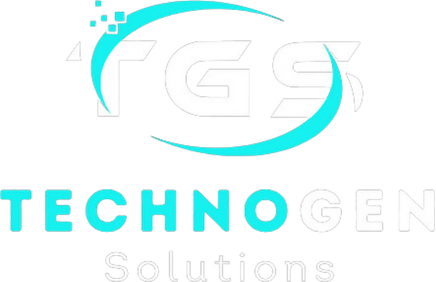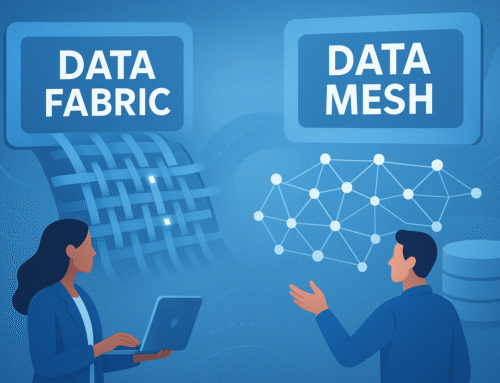In today’s fast-paced digital world, small and medium businesses (SMBs) face a significant challenge: how to maximize their return on investment (ROI) with limited resources. Fortunately, digital marketing offers SMBs a scalable and cost-effective solution to grow their business, reach new audiences, and improve profitability. In this article, we’ll explore how digital marketing can effectively boost ROI for small and medium businesses, providing actionable strategies and insights.
What is Digital Marketing?
Digital marketing encompasses all marketing efforts that use an electronic device or the internet. Businesses leverage digital channels such as search engines, social media, email, and websites to connect with current and potential customers. For SMBs, digital marketing levels the playing field, allowing them to compete with larger businesses on a global scale.
The Importance of Digital Marketing for SMBs
Small and medium businesses often operate with smaller budgets, meaning that every dollar spent on marketing needs to count. Traditional marketing methods, like TV or print ads, may not always offer the best ROI. On the other hand, digital marketing allows SMBs to:
- Target specific audiences based on demographics, behavior, and interests.
- Track performance in real-time and adjust strategies accordingly.
- Engage directly with customers through social media and other online platforms.
- Optimize costs, ensuring that marketing dollars are spent wisely.
Digital marketing is data-driven and provides clear insights into what works and what doesn’t. This makes it easier for businesses to optimize their campaigns and maximize their ROI.
Key Digital Marketing Strategies to Boost ROI
1. Search Engine Optimization (SEO)
SEO is the process of optimizing a website to rank higher in search engine results pages (SERPs) for relevant keywords. A higher ranking increases visibility, leading to more organic traffic and, ultimately, more conversions. For SMBs, investing in SEO can provide long-term benefits as organic search traffic is free, unlike paid ads.
Why SEO is Crucial for ROI
SEO may require an initial investment, but over time, it can deliver substantial returns without ongoing costs. Key elements of a successful SEO strategy include:
- Keyword research: Targeting keywords that your potential customers are searching for.
- On-page optimization: Ensuring that your website is structured correctly and optimized for both search engines and users.
- High-quality content: Publishing content that is valuable and relevant to your audience, improving engagement and conversion rates.
By increasing organic traffic, SMBs can reduce their dependency on paid ads and improve their ROI over time.
2. Pay-Per-Click (PPC) Advertising
PPC advertising, such as Google Ads or social media ads, can deliver immediate results by placing your business in front of potential customers right when they’re searching for products or services like yours. This strategy is particularly useful for SMBs that need quick visibility and results.
How PPC Can Maximize ROI
PPC allows businesses to control their budget, target specific keywords, and track results in real-time. Key benefits include:
- Cost control: Set a daily or monthly budget and pay only when someone clicks on your ad.
- Targeting options: Reach specific audiences based on demographics, location, and behavior.
- Measurable results: Track every click and conversion, allowing for precise ROI calculations.
By optimizing ad campaigns, SMBs can ensure that every dollar spent is generating a measurable return.
3. Social Media Marketing
With billions of users worldwide, social media platforms like Facebook, Instagram, LinkedIn, and Twitter offer SMBs a powerful tool to reach and engage with their audience. Social media marketing is cost-effective and allows businesses to build a community, increase brand awareness, and drive traffic to their website.
Leveraging Social Media for ROI
Key strategies for maximizing ROI through social media include:
- Content marketing: Sharing valuable, engaging content that resonates with your audience.
- Paid social ads: Running targeted ads to reach specific groups of potential customers.
- Engagement: Interacting with your audience through comments, messages, and social sharing to build trust and loyalty.
By actively engaging with their audience, SMBs can foster long-term relationships and convert followers into loyal customers, boosting overall ROI.
4. Email Marketing
Despite the rise of social media, email marketing remains one of the most effective channels for driving conversions and maintaining customer relationships. For SMBs, email marketing offers a high ROI due to its low cost and high engagement rates.
Maximizing ROI with Email Campaigns
A well-executed email marketing campaign can significantly increase sales and customer retention. Key tactics include:
- Segmentation: Tailoring your messages to different customer segments based on their behavior or preferences.
- Personalization: Creating personalized emails that speak directly to the recipient’s needs.
- Automation: Using automated workflows to send timely, relevant emails based on triggers like website visits or past purchases.
With the right strategy, email marketing can consistently deliver a high ROI and complement other digital marketing efforts.
5. Content Marketing
Content marketing involves creating and distributing valuable, relevant content to attract and engage a clearly defined audience. For SMBs, this strategy can be particularly effective in building trust, increasing website traffic, and nurturing leads over time.
Boosting ROI with High-Quality Content
To maximize ROI, SMBs should focus on creating content that solves their customers’ problems and positions them as industry experts. Effective content marketing includes:
- Blog posts: Regularly updated blog content that targets relevant keywords and provides valuable insights.
- Videos: Engaging video content that showcases your products, services, or brand story.
- Case studies and testimonials: Demonstrating your success through real-world examples.
By providing value to their audience, SMBs can build long-term relationships, improve customer loyalty, and boost their overall ROI.
Measuring and Optimizing ROI
To maximize the ROI of digital marketing, it’s essential to continuously track performance and make data-driven adjustments. Key metrics to monitor include:
- Conversion rate: The percentage of visitors who take a desired action (e.g., making a purchase, filling out a form).
- Cost per acquisition (CPA): Acquiring a new customer.
- Return on ad spend (ROAS): The revenue generated for every dollar spent on advertising.
- Customer lifetime value (CLV): The total value a customer brings to your business over their lifetime.
By analyzing these metrics, SMBs can optimize their campaigns and ensure they get the best possible return on investment.
Conclusion
In an increasingly digital world, SMBs cannot afford to ignore the potential of digital marketing to boost their ROI. Whether through SEO, PPC advertising, social media, email marketing, or content marketing, the opportunities are endless. By implementing these strategies and continuously optimizing for performance, small and medium businesses can compete effectively, increase their profitability, and achieve long-term success.



Leave A Comment